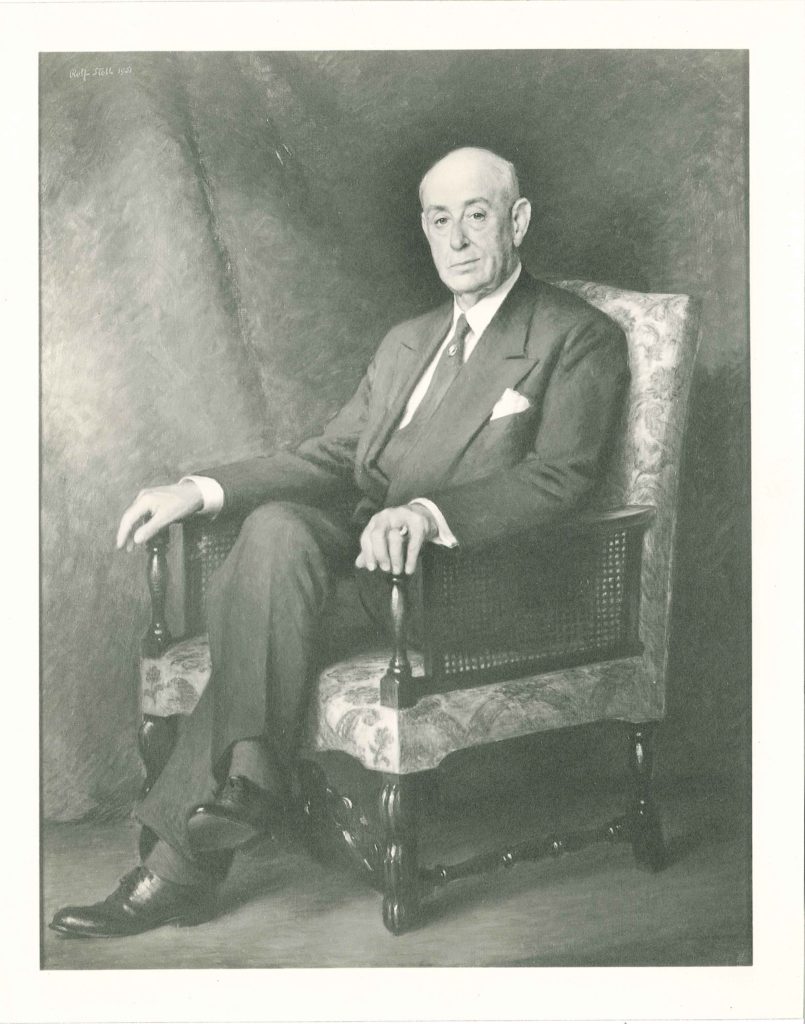Have you ever wondered about who our prestigious red-brick buildings are named after? Sure, we all recognize names like “Derthick” and “Steve Lacy,” but have you ever stopped to consider the lives these individuals lived that eventually lead to our school buildings being dedicated in their honor?
In honor of homecoming week, I delved into the archives in the basement of P.H. Welshimer library with the help of our very own helpful archivist, Katie Banks, and found information on the people after whom four of our most-used buildings on campus are named. Here is what I found:
Steve Lacy (Steve Lacy Fieldhouse)
Steve Lacy was a Johnson City businessman and a forerunner in giving consistently, faithfully, and sacrificially to support his alma mater. An East Tennessee native, Lacy enrolled at Milligan in 1927 after graduating as valedictorian at Holston High School. Quickly, the young freshman became involved in seemingly every campus activity, including lettering in basketball and becoming a member of the football team, music club, Masque, drama club, debate club and debate team. In his senior year Lacy was the captain of the basketball team, won a conference championship, and graduated cum laude.
After graduating from Milligan, Lacy taught, coached, and worked his way to athletic director at a nearby high school. In the spring of 1933 Lacy left the school and was named athletic director, head football coach, and girl’s basketball coach at Milligan, thus beginning his 16-year period of service as a teacher, coach and administrator. Lacy was the only coach in the history of the Smoky Mountain Athletic Conference to win championships in four sports. His 1940 undefeated football team was also considered for an invitation to the Sun Bowl.
Soon after his retirement, Lacy was elected to the Board of Trustees. From there he became chairman of the board and helped Milligan attain full accreditation in 1960. The dedication of the fieldhouse in his name was the third honor Steve Lacy received from Milligan, after earning the honorary Doctor of Laws degree in 1963, and the FIDE ET AMORE distinguished service medallion in May 1975.
Henry Derthick (Derthick Hall)
A former Milligan President, Henry Derthick is credited for essentially saving our campus in its biggest time of need. Derthick was named President in 1917; the next year the administration building burned down. The former administration building was nothing like ours is today. Back then, it was a building comprised of classrooms, archives and records, and the library. Everything was destroyed in the fire, which was later found to have been started by a World War I student trainee’s cigarette that was not fully put out. Milligan students were not allowed to smoke, but the student trainees on campus were the exception to the rule because they were also members of the military working towards their degrees. Henry Derthick made it his mission to fundraise for the building of a new administration facility. He even went as far as to request help from the government since it was proven that it was one of their trainees who caused the fire. The government eventually complied and gave Milligan around $23,000 to help rebuild. Derthick supervised the new building being constructed and named it the new administration building. Shortly after his death the building was renamed in honor of the man that helped it into existence.
Ura Seeger (Seeger Chapel)
Ura Seeger is known for using his wealth and influence to help provide and influence educational facilities with a focus on the church. Early on in his life he was appointed to the board of directors at the Indiana State School for Boys, a correctional institution. In this position he noticed that the background of the church was lacking. From here he became devoted to promoting and helping finance facilities where the church was emphasized in their communities. Some years before his death, Seeger discovered the mission of Milligan College and donated a block of stock to Milligan which ultimately appreciated to approximately $300,000 and helped to build many portions of our campus that are still standing today.
P.H. Welshimer (P.H. Welshimer Memorial Library)
P.H. Welshimer is remembered most frequently as a man who was once the minister of the world’s largest Christian Church, and the superintendent of the largest Bible school. He was a well-known leader in the Restoration Movement and served 56 years in ministry. He accepted the call to ministry from the First Christian Church of Canton, Ohio. There he is credited with helping countless men follow their own calls into ministry.
Welshimer chose to go by “P.H.” instead of his birth name, Pearl. Unlike the other notable names here, Welshimer did not go to Milligan- instead, he graduated from Ohio Northern University. Welshimer’s connection to Milligan was through his daughter, Mildred Welshimer, who was the dean of women at Milligan in the late 1940s. He was invited on campus to lecture on numerous occasions.

